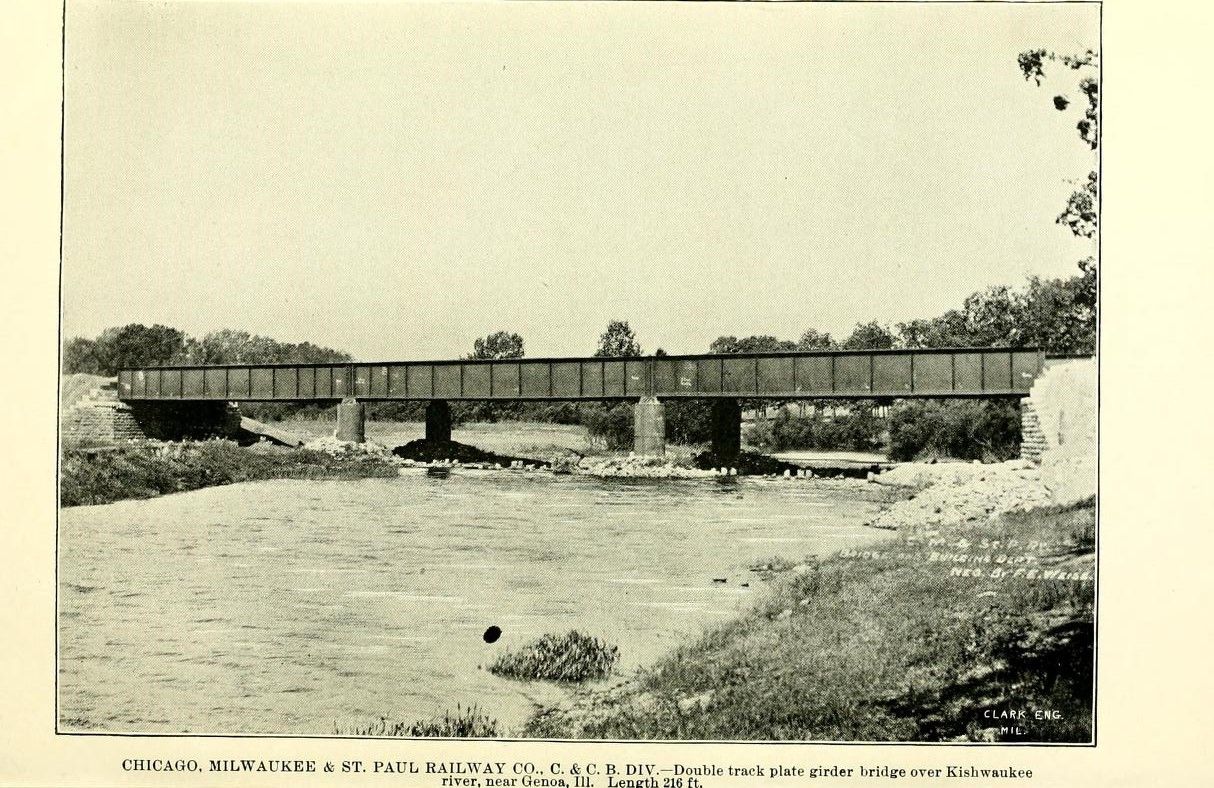Located on the Missouri River, Chamberlain had been the western terminus of the Chicago, Milwaukee & St. Paul Railway (Milwaukee Road) since 1881. With a new expansion, a pontoon bridge was built across the Missouri River, and the race to Rapid City was on.
In 1906, the railroad was further extended to Murdo, and reached Rapid City by 1907. By 1910, the Milwaukee Road fully engulfed the WRV.
This route became one of only two routes crossing the entire State of South Dakota. From Rapid City, plans were made to continue west, but these never materialized.
With the route dead ending at Rapid City, the route was a major cash hole to the railroad. Still reeling from a Pacific expansion made at the same time, the railroad was reorganized as the Chicago, Milwaukee St. Paul & Pacific Railway in 1913.
Traffic on the route was highly competitive, as the Chicago & North Western ran a main line just to the north, which roughly paralleled this route between Milwaukee, Wisconsin and Rapid City.
Since this line became such a major expense, it was identified for abandonment in 1980, as the Milwaukee Road reorganized to avoid bankruptcy.
Fortunately, the State of South Dakota stepped in and bought the entire route between Sheldon, Iowa and Rapid City. However, no operator would be found until 1987, when the Dakota Southern Railway began operations on the route between Mitchell and Rapid City.
In 1998, the route was discontinued between Kadoka and Rapid City. However, all critical infrastructure is still in place, waiting for a train that may never come again.
Proposals have been made to recycle this segment as a trail, as it directly goes through the famous Badlands of South Dakota.
In 2021, the State of South Dakota sold the Mitchell-Rapid City line to Ringneck & Western Railroad; a subsidiary of Watco. The line is in service to Vivian, and the route to Rapid City may again see service in the future.
11/07/21
Located in Rapid City, this unique through girder has a long history, tracing back many years and covering two states.
The original bridge at this location was a wooden trestle. However, by 1935, it was desirable to replace this trestle with a bridge of permanent construction.
The chosen solution was to use two spans located at the Tomah, Wisconsin bridge yard. Originally built 1887 as a three span bridge across the Kishwaukee River at Bridge #Z-204 east of Genoa, Illinois; that bridge was replaced in 1931, and the old girders saved for future reuse.
One such span was reused as a deck girder at Canton, South Dakota; where it was destroyed in a 2019 ice jam. The other two spans remained in storage, until a possible reuse was discovered.
In December 1935, plans began to replace the original bridge at this location. As a result, two 72-foot spans from Z-204 would be remodeled and reused here the following year. As part of the remodeling, the spans were converted from double track to single track, likely altering the entire floor system.

Bridge #Z-204; Genoa, Illinois. From Annual report of the Railroad and Warehouse Commission of the State of Illinois, 1899.
While relocating spans is rather common, it is unusual to convert a two track through girder span to a single track span. Unfortunately, the author was not able to get underneath the bridge, to look for signs of modification.
Overall, the bridge remains in good condition. The bridge has an unknown future, as Rapid Creek is particularly notorious for flooding. However, it is believed that the RWRR will eventually reopen this line for freight traffic.
The author has ranked this bridge as being moderately significant, due to the common design.
The photo above is an overview. The bridge is easily accessible nearby trails.
